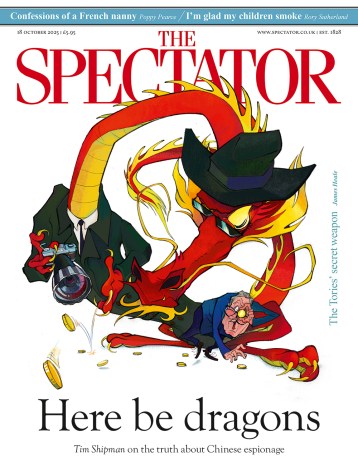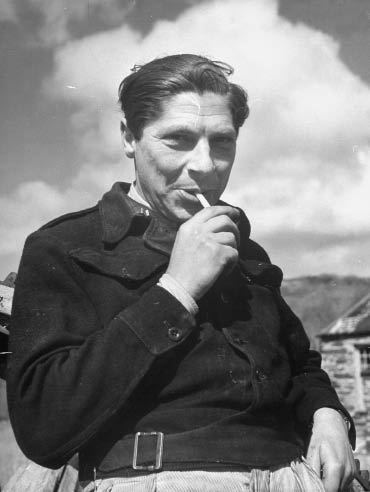Do we need another huge life of Arthur Koestler? He wrote a great deal about himself, including three autobiographical works: Spanish Testament (1937), describing his experience as a death-row prisoner of General Franco, Arrow in the Blue (1952) and The Invisible Writing (1954). He also contributed to The God that Failed, the fascinating collection of testimonies by former Communists which Dick Crossman edited in 1949. He and his last wife wrote an unfinished joint memoir, published a year after their deaths as Stranger on the Square (1984). An ex-wife, Mamaine, contributed a volume, Living with Koestler (1985). Then a quarter-century after his death came a large-scale 640-page biography entitled Arthur Koestler: The Homeless Mind by David Cesarani (1998). Cesarani told me that he had begun his work as a Koestler admirer but had gradually turned against him in the course of his extensive researches. It would be unfair to call the book a hostile biography, but it left a nasty taste.
Michael Scammell’s new life is an attempt to redress the balance, and restore to Koestler some of the moral integrity damaged by Cesarani’s findings. He has done a great deal of hard work: interviewing a hundred or so survivors who knew Koestler, using unpublished letters and diaries and delving into the archives of MI5, the CIA, the French Sûreté and various Communist parties. There is a good deal that is new in the book, albeit nothing sensationally revealing. It is generally a good read, and while I do not think it succeeds in its main objective, it casts a lurid light on the ideological wars of those painful decades, the Thirties, Forties and Fifties. Those interested in Koestler will have to read both books, and make up their own minds which gives the truer picture of the man.
There is no argument about Koestler’s importance. His novel Darkness at Noon (1940), with its insights into the Stalinist trials and executions of Old Bolsheviks, is an extraordinarily powerful work. It is not the kind of classic you ever want to re-read, but at the time and long afterwards it did Soviet Communism more damage than any other work of fiction. In alerting intellectuals to the dangers of Marxism, Koestler may have been less influential than Orwell in the English-speaking world, but on the Continent he was unrivalled. Moreover he followed it up with constant lectures, speeches and writings and by taking a leading role in the Congress for Cultural Freedom, and ensuring the West won the Cold War intellectually, before Reagan, Thatcher and John Paul II won it politically and economically after his death.
It matters not that Koestler never again reached the heights of Darkness at Noon. The next 40 years were filled with literary activity on a huge variety of subjects, parapsychology, telepathy, abolishing capital punishment, the roots of creation, the way the mind works and other scientific and pseudo-scientific matters.
None of his books quite hit the jackpot again, and some were failures. If in the earlier part of his life he ran in tandem with Orwell, in the second half he was a doppelgänger of Aldous Huxley. Still, it is not given to many writers to produce one book of first-class importance. In 1998 a panel of writers and intellectuals from all over the world voted Darkness at Noon as the eighth best and most significant novel of the 20th century.
The question, then, is not Koestler’s status, but his character. Was he a brute, especially in his relations with women? All his adult life he was a tireless seducer of women, and on the whole a very successful one. So much so, I would say, that he became a bit of a joke, especially after his seduction technique was brilliantly parodied by Simone de Beauvoir in her novel about cosmopolitan intellectuals, Les Mandarins (1954), which won the Prix Goncourt and caused many giggles on both sides of the Channel.
Unfortunately Koestler at times indulged in drinking bouts which brought out a darker side in his relations with women and may have been coloured by his own hatred of his mother, a significant feature of his life. Long after his death, Jill Craigie (the wife of Michael Foot) accused Koestler of raping her after a Hampstead pub-crawl, and the publication of this charge in Cesarani’s biography undoubtedly did Koestler’s reputation lasting damage. Zita Crossman may have been another victim, substantiating Dick Crossman’s accusation that Koestler was ‘a hell of a rapist’.
Scammell seeks to undermine Craigie’s accusation but does not do so successfully. I was shaken by his comment on sexual customs in the 1940s and 1950s:
That is quite untrue. Attitudes to rape half a century ago were essentially the same as today and Scammell’s comment betrays the weakness of his case. Koestler undoubtedly could be physically brutal to women. He once admitted, ‘I felt it would be worthwhile to hang or do 20 years in gaol for killing a woman’. Janetta Jackson said his relationship with her was ‘an odd mixture of consideration, thoughtfulness and extraordinary brutality’. She added: ‘He was not the sort of man who was systematically violent to women or got pleasure out of it. It was just that he sometimes lost his temper and slapped you.’ Her conclusion was that ‘at heart he hated women’.
The second crux of Koestler’s relationship with women is his suicide pact with his third wife, Cynthia, which both carried out in 1983. This has always seemed to me the worst thing Koestler ever did. He was suffering from advanced Parkinson’s disease with the prospect of a lingering and painful death, so his desire to end his life was understandable. But she was much younger and perfectly healthy. Unlike Cesarani, Scammell argues that Cynthia, far from being dominated by Koestler’s overwhelming personality was, at the time of their deaths, the stronger of the two, and that her consent to joint suicide sprang from a genuine belief that she could not live without him. Here he puts up a better case than over the Craigie rape, but I am still sceptical.
The truth was that Koestler was a man of many transient beliefs, and none. He had no religion. He was a Zionist, then a Communist, then a searcher for para- psychological mysteries. But he had no moral code by which to live, other than what he invented for himself at any one time. That made him, as someone of strong will and great brainpower, a dangerous fellow.






Comments